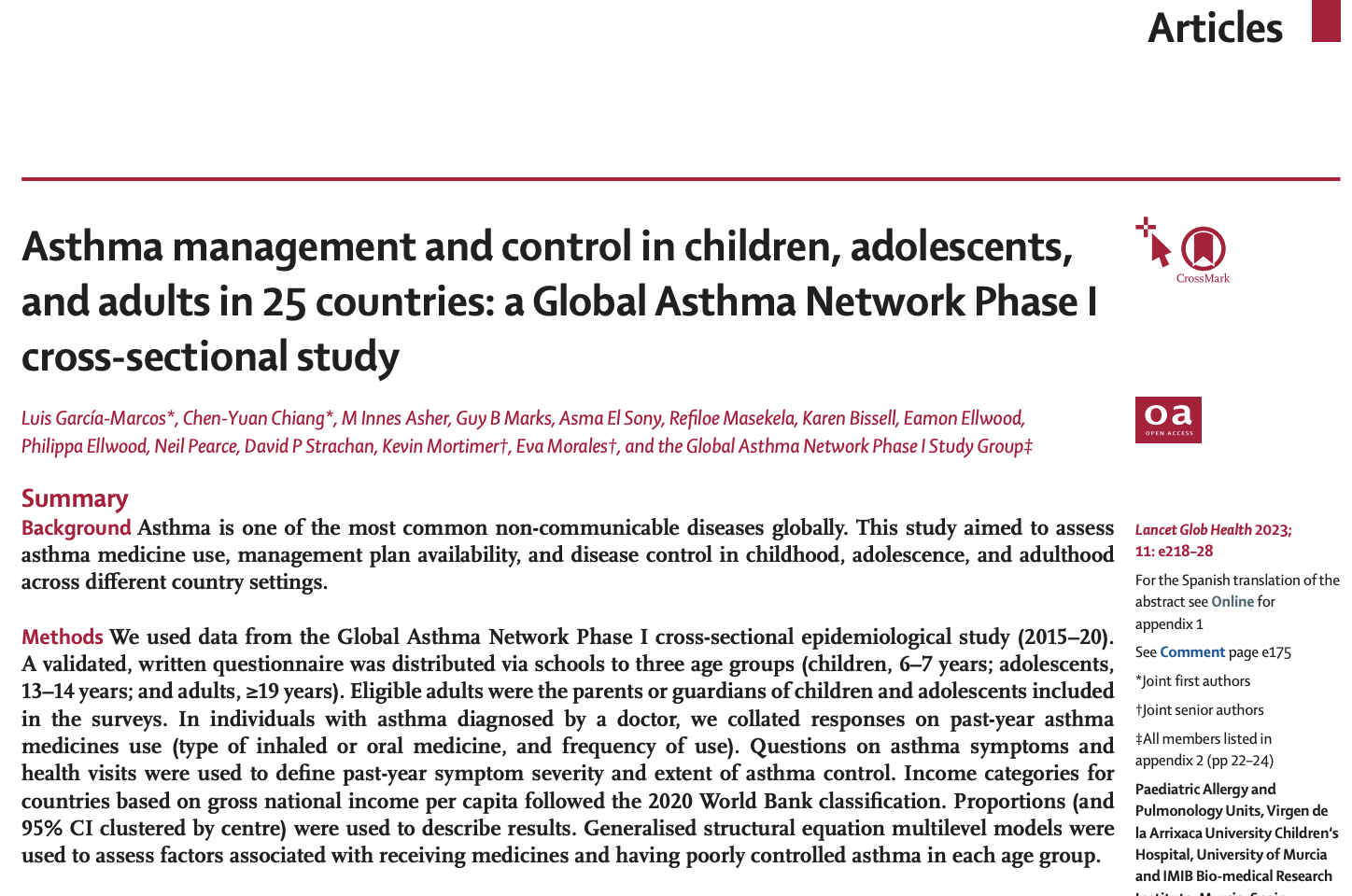World Obesity Federation
Investing in action on obesity: Catalysing the double dividend
Briefs & Fact Sheets
30 Oct 2025
01 Feb 2023

Asthma is one of the most common non-communicable diseases globally. This study aimed to assess asthma medicine use, management plan availability, and disease control in childhood, adolescence, and adulthood across different country settings.
We used data from the Global Asthma Network Phase I cross-sectional epidemiological study (2015–20). A validated, written questionnaire was distributed via schools to three age groups (children, 6–7 years; adolescents, 13–14 years; and adults, ≥19 years). Eligible adults were the parents or guardians of children and adolescents included in the surveys. In individuals with asthma diagnosed by a doctor, we collated responses on past-year asthma medicines use (type of inhaled or oral medicine, and frequency of use). Questions on asthma symptoms and health visits were used to define past-year symptom severity and extent of asthma control. Income categories for countries based on gross national income per capita followed the 2020 World Bank classification. Proportions (and 95% CI clustered by centre) were used to describe results. Generalised structural equation multilevel models were used to assess factors associated with receiving medicines and having poorly controlled asthma in each age group.
Overall, 453 473 individuals from 63 centres in 25 countries were included, comprising 101 777 children (6445 [6·3%] with asthma diagnosed by a doctor), 157 784 adolescents (12 532 [7·9%]), and 193 912 adults (6677 [3·4%]). Use of asthma medicines varied by symptom severity and country income category. The most used medicines in the previous year were inhaled short-acting β2 agonists (SABA; range across age groups, 29·3–85·3% participants) and inhaled corticosteroids (12·6–51·9%). The proportion of individuals with severe asthma symptoms not taking inhaled corticosteroids (inhaled corticosteroids alone or with long-acting β2 agonists) was high in all age groups (934 [44·8%] of 2085 children, 2011 [60·1%] of 3345 adolescents, and 1142 [55·5%] of 2058 adults), and was significantly higher in middle-to-low-income countries. Oral SABA and theophylline were used across age groups and country income categories, contrary to current guidelines. Asthma management plans were used by 4049 (62·8%) children, 6694 (53·4%) adolescents, and 3168 (47·4%) adults; and 2840 (44·1%) children, 6942 (55·4%) adolescents, and 4081 (61·1%) adults had well controlled asthma. Independently of country income and asthma severity, having an asthma management plan was significantly associated with the use of any type of inhaled medicine (adjusted odds ratio [OR] 2·75 [95% CI 2·40–3·15] for children; 2·45 [2·25–2·67] for adolescents; and 2·75 [2·38–3·16] for adults) or any type of oral medicine (1·86 [1·63–2·12] for children; 1·53 [1·40–1·68] for adolescents; and 1·78 [1·55–2·04] for adults). Poor asthma control was associated with low country income (lower-middle-income and low-income countries vs high-income countries, adjusted OR 2·33 [95% CI 1·32–4·14] for children; 3·46 [1·83–6·54] for adolescents; and 4·86 [2·55–9·26] for adults).
Asthma management and control is frequently inadequate, particularly in low-resource settings. Strategies should be implemented to improve adherence to asthma treatment guidelines worldwide, with emphasis on access to affordable and quality-assured essential asthma medicines especially in low-income and middle-income countries.